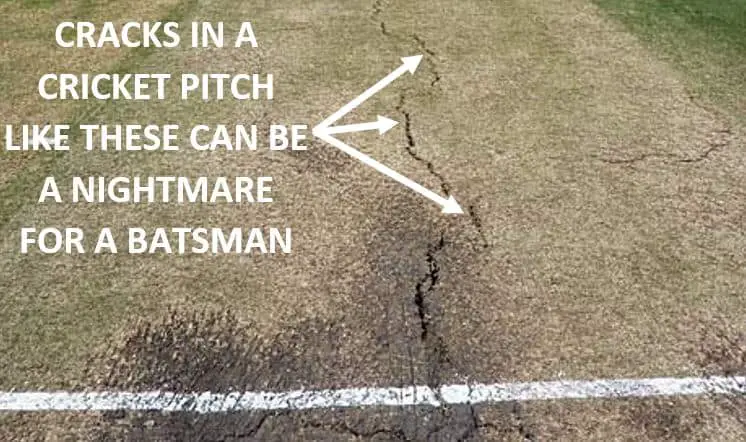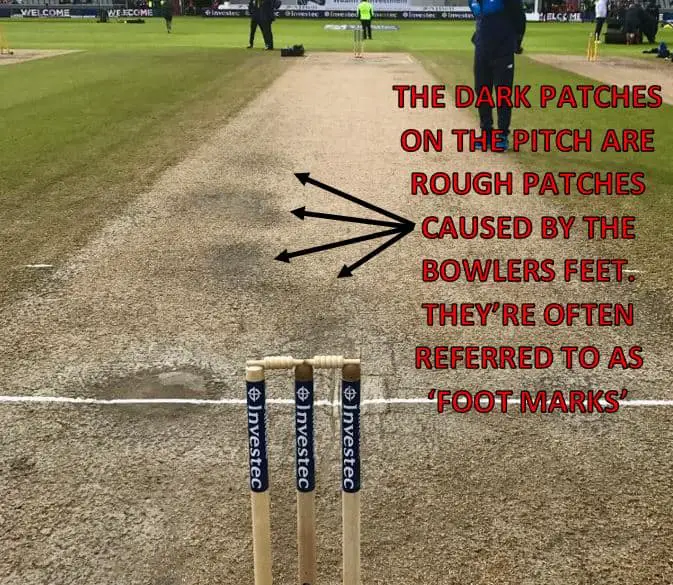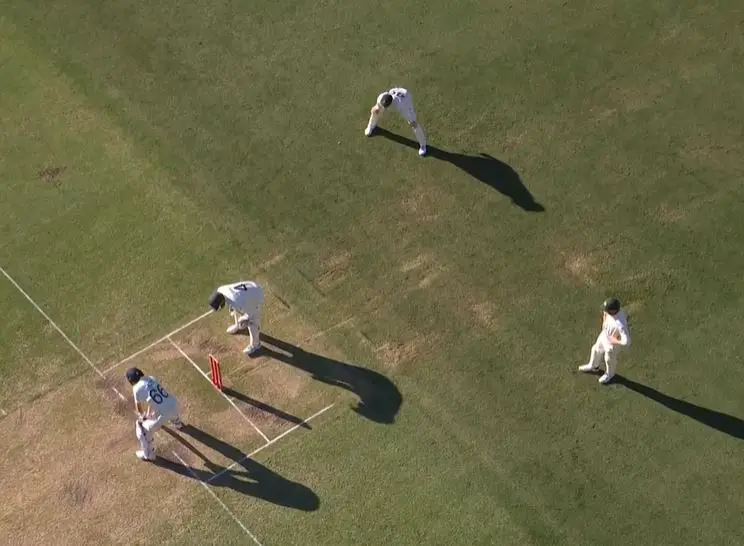If you’ve watched test cricket for any reasonable amount of time, then you’ve probably heard people harping on about how important it is to get ‘big runs on the board’ in the 1st innings of a match. Scoring in excess of 400 runs in the 1st innings puts your side in a great position and puts pressure on the other team to keep pace with you. If the other team bats and concedes a first innings lead, they will be at risk of losing the game once the second innings concludes.
Although scores above 400 are often seen as the benchmark for good 1st innings totals, the same can definitely not be said for the 4th innings of a test match. In the 4th innings, lower scores are much more common and seen as more acceptable. In fact, a team needing to score 400 runs in the 4th innings to win the game would be seen as heavy underdogs by fans and commentators. Almost no-one would expect them to score this many! To put into context how difficult it is to score 400 in the final innings, at the time of writing it’s only been done 20 times in the history of test cricket. Considering there have been over 2400 test matches played, this is an incredibly low number.
Additionally, some of the most elite batsmen struggle a lot more in the 4th innings compared to the 1st. For example, at the time of writing Joe Root averages 48 in the 1st innings, and only 33 in the 4th. The disparity is even more extreme when you look at Steve Smith’s record – he currently averages an amazing 87 in the 1st innings and only 30 in the 4th innings. But what is the reason for this difference between the 1st innings and the 4th innings? Why is it so much harder to bat last than first? In this post, this is the question I’ll be answering!
So, why is it difficult to bat in the 4th innings of a test match?
Batting in the 4th innings is difficult for the following reasons:
- The pitch often dries out, making the ball spin more
- There may be large cracks in the pitch for bowlers to aim at
- Footmarks may have appeared on the pitch
- There may be dents in the surface due to previous days of bowling
- Batsmen are often under more pressure in the 4th innings
- Batsmen may be fatigued due to the previous days of the match
- The fielding team may be hunting for wickets with attacking fields
In the rest of this post we’ll explore each of the reasons above individually, so if you’re interested in hearing more about them – feel free to stick around and read on!
The Pitch Often Dries Out, Making The Ball Spin More
The vast majority of cricketing countries play most of their test matches in very hot, dry climates. This means that their cricket pitches are likely to be a lot drier than the ones in cooler climates like in England and New Zealand. Pitches in the sub-continent can start off very dry on day one, so by the time a few days of the test have passed and you get to the 4th innings, batsmen could be playing on an incredibly dry and dusty surface.
When the surface of the pitch gets extremely dry and dusty, there is a lot more turn on offer for the spin bowlers. The ball is more likely to disturb the surface of the pitch and explode in either direction, which makes it almost impossible for the batsmen to play confidently. Therefore, teams like India who have several fantastic spin bowlers make it extra difficult for batsmen to bat against them in the fourth innings. No one wants to be batting last on an incredibly dry, turning surface – it’s one of the hardest challenges in cricket. This is why almost all teams will choose to bat first if it’s obvious that the pitch is going to become extremely dry towards the end of the game.
There May Be Large Cracks In The Pitch For Bowlers To Aim At
In warm test playing countries there’s also the chance that cracks could start to appear on the pitch on days 4 & 5 of the test when the 4th innings is being played. The appearance of large cracks in the surface of the pitch is something that makes batting incredibly hard.

Firstly, there is actual physical effect of having large cracks in the pitch. If the bowler lands the ball in a crack, then the ball could literally do anything. It could scuttle along the floor, jump upwards violently, and it could also seam into or away from the batsman suddenly. No batsman can possibly prepare themselves to deal with something like this – especially when the ball is bowled at high pace. The best thing for a batsman to do in situations like this is to cover the stumps and hope that the ball doesn’t dismiss them or injure them. When these cracks appear and the bowlers hit them, there is a higher chance that they will end up getting the batsman out.
Secondly, cracks appearing in the 4th innings of the game can have a huge psychological effect on the batsman. Put yourself in the shoes of a test cricketer in Australia – you’re batting against Pat Cummins in the 4th innings at the Gabba and you can see a couple of huge cracks running down the pitch in front of you. You know that he’ll be trying to land the ball on them, and you also know that something crazy and potentially dangerous could happen if he does. These kinds of thoughts can overtake the mind of a batsman, and soon enough they’re thinking more about what could happen if the ball hits a crack than they are about just trying to play the ball on its merits. The mere presence of cracks on the pitch in the 4th innings can put elite batsmen off their game and make them play scared.
Footmarks May Have Appeared On The Pitch
As we’ve already discussed, by the time the 4th innings comes around in test playing nations with a warm climate, the pitch will be at its driest. The dryer the pitch is, the more the ball will spin due to an increased amount of friction between the ball and the pitch.
To add to the general dryness of the pitch, there is also the issue of footmarks – or ‘rough’ as it is commonly known. Footmarks are basically large rough patches that appear on the pitch where the bowlers have been going through their bowling action and then their follow through. You can see an example of rough patches caused by the bowler’s feet in the picture below. Once the 4th innings arrives the footmarks on the pitch will be at their worst and will be even drier and rougher than the rest of the pitch, thus offering more spin!

If a spin bowler lands the ball in the footmarks towards the end of the match, then there is a high chance that the ball will behave very unpredictably. The more unpredictably it behaves, the harder it becomes for the batsman to keep their wicket intact. This is especially the case if the spin bowler is turning the ball in towards the batsman out of the footmarks, rather than turning it away from them. When the ball is landing in the footmarks and spinning away from their body, the batsman can simply leave the ball alone. When the ball is landing there and turning in towards them, it could just spin normally. However, it could also spin sharply and bowl them through the gate, it could spin and bounce sharply and take the glove, and sometimes it may not spin at all and shoot along the deck. Therefore, the presence of large footmarks on the pitch during the 4th innings is something that definitely makes batting a lot harder and is something that no batsman relishes facing, especially when batting against elite spin bowlers.
If you want to learn more about why bowlers will choose to bowl into the footmarks – click here!
There May Be Dents In The Surface Due To Previous Days Of Bowling
When fast bowlers repeatedly bowl the ball into the surface of the pitch, small indentations can appear where the ball lands. The indentations can become even more pronounced if any of the teams have tall bowlers who love to ‘bang the ball in’ to the wicket like a Josh Hazlewood or a Morne Morkel. These indentations can’t really be seen from your TV screen, but when you get up close to the pitch and examine it closely, you will be able to tell that these dents are all over the place. The longer the match goes on and the more deliveries land in the same place, the bigger the dents will become.
So, at this point you may be wondering, how does a dent in the pitch make it hard to bat? Well, it’s actually pretty simple. A dent in the pitch affects the ball in roughly the same way that a crack in the pitch does, as I explained in one of the previous sections. If these dents become large and pronounced and a fast bowler lands the ball in one of them, it may cause the ball to do something crazy!
If the ball hits the upside of a dent, it could cause the ball to slow down quite a bit or ‘get stuck in the pitch’. This usually causes the batsman to play their shot too early and can often end up with them hitting the ball up in the air. It could also cause the ball to bounce a lot more than usual, which is a recipe for disaster for a batsman. If the ball hits the downside of a dent, it could cause the ball to bounce a lot less than usual, which is also something that no batsman can prepare for. If the ball is on the line of the stumps, it may end up shooting underneath the batsman’s bat and bowling them.
By the 4th innings, any dents that have begun to appear in the pitch will be at their worst, and that is another reason why it’s so much harder to bat at this stage of the match.
Batsmen Are Often Under More Pressure In The 4th Innings
The mental aspect of batting in the 4th innings is often overlooked, but I see it as one of the biggest reasons why it’s so hard for many batsmen to perform consistently well at this stage of a match.
Batsmen will often be in one of two game situations when they enter the 4th innings:
- They will have a chaseable target and now need to score the runs to win the game
- They will have an impossible target to chase and now must bat out the rest of the game and secure the draw
In both of these game situations, there is significant pressure. In scenario 1, batsmen will be under pressure to score and not bat too conservatively on a deteriorating pitch. If the target they are chasing is quite low, certain batting sides may feel pressure because everyone expects them to win. If the target is a challenging but chaseable one, they may feel pressure to perform and get their team over the line. In scenario 2, there is a huge amount of pressure on each batsman to not lose their wicket. Usually, batsmen enter their innings with the goal of scoring runs, but in these situations their innings becomes all about survival. This can add a different element of pressure that some players don’t cope well with.
Batsmen bat best when they are feeling calm and in the zone. Being calm allows you to fully focus on watching the ball and playing your shots. When you feel under pressure, you may start thinking about the different ways you could get out, what your coaches are going to say or what its going to feel like if you lose the game from this position. Once you start thinking about these things, you are less focused on your actual job which is to play each ball on its merits. This makes it so much harder to bat confidently!
The 4th innings is where wins and losses are realised, so its only natural that this is where pressure gets to players the most. If you’d like to learn about some of the methods that me and other cricketers use to calm themselves down before or during a key innings, click here to read one of my posts on that topic.
Batsmen May Be Fatigued Due To The Previous Days Of The Match
At some point in our lives, we’ve all felt the effect of being tired and mentally drained. If you’re tired at school, it can make it hard to focus on what your teacher is trying to teach you. If you’re tired whilst you’re at work, you might be zoning out and daydreaming instead of completing the task you’ve been set by your boss. If you’re tired and mentally drained while you’re batting, then you’re going to really struggle to watch the ball consistently and to react and play your shots quickly enough.
Test cricket is one of the most mentally taxing sports there is. The game is played over 5 days, and a lot can happen in that time. On the first day of the game players will usually be at their most physically and mentally fresh, which is a great position to be in if you have to go out into the middle and bat against a tough bowling attack. However, over the next few days certain players can get very stressed, and some may not sleep very well. This means that by the time the 4th innings approaches, some batsmen may be very tired and mentally checked-out. This is the last state you want to find yourself in if you’re playing against an elite bowling line-up that is desperate to get you out. You may find yourself forgetting to watch the ball, being lazy with your foot and head movement, and playing your shots way too late as a result.
The Fielding Team May Be Hunting For Wickets With Attacking Fields
The final thing that can make it very hard to construct long innings is the fact that the fielding team will usually be desperate to take your wicket and will set extremely aggressive fields as a result. Think about the following two 4th innings scenarios again:
- You have been set a chaseable target and now need to score the runs to win the game
- You have been set an impossible target and now need to bat out the rest of the game and secure the draw
In scenario 1, the fielding team will want to take wickets as quickly as possible to force the batting team into going conservative. The best way to do this is by setting attacking fields with plenty of fielders in catching positions! For example, let’s say the target you’re chasing is 200. If you reach 100 runs and have only lost 1 wicket, there will be nothing stopping your team from continuing to bat in an aggressive, expansive manner and scoring the rest of the runs easily. However, if the bowling team can reduce your side to 100-5 by setting aggressive fields, your team may start to bat conservatively so that you don’t lose the game. In scenario 2 where there is no hope of victory for your team, the bowling side will be the only team going for the win. As a result, they will have very aggressive field placings, with plenty of slip fielders and plenty of fielders around the bat.

If you’re batting in the 4th innings and the fielding captain has a very attacking field set, this usually means that any mistake you make (such as an edge or a mistimed shot) will be punished because there will be a fielder in position to take the catch. This gives you less margin for error as a batsman, because it’s very hard to construct a long, mistake-free innings in the final part of the match when the pitch is deteriorating in all the ways that I’ve described above. The chances are that sooner or later you will make a mistake and lose your wicket as a result.
Conclusion
I’ve lost count of the number of times that casual watchers of cricket have asked me why it seems so much harder to bat at the end of a game rather than at the beginning. If you were asking this question too, I hope this post has provided you with a decent answer.
In a 4th innings in the sub-continent, it’s likely that you’re going to end up batting against a lot of spin bowling due to the pitch spinning a lot more. If you feel like you need to improve your batting against spin, then you can start by reading my post here.
However, if you really want to master batting against spin, you’re going to need to learn how to pick a spin bowler’s variations! Luckily, I’ve written a detailed ebook that will teach you everything you need to know about how to do that – and I’ve made it available to download for free! Head over to the page linked here if you’d like to download it!
